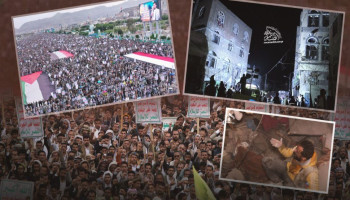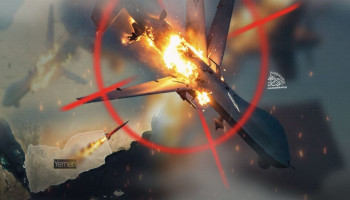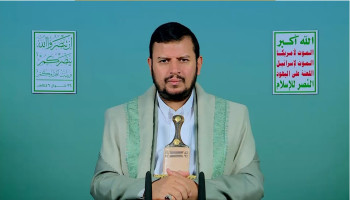Jordanian sources have revealed previously hidden information regarding dozens of heroic operations carried out by individual Jordanian fighters against Israeli occupation forces. These sources, speaking to Shehab News Agency, emphasized that the operation of martyr Maher al-Jazi is not the first in the battle of "Al-Aqsa Flood." In coordination with Israeli occupation forces, Jordanian authorities have thwarted over 70 attempted operations along the Jordanian border with occupied Palestinian territories.
The sources disclosed that approximately 100 cells have been arrested from both the Jordanian and Israeli sides. A joint decision between Jordan and the Israeli occupation government has been made not to publicize these cells to prevent further encouragement of Jordanian youth to undertake military and heroic operations against the occupation forces.
The sources further revealed, "Some of these groups have been released to avoid sparking public outrage."
The Karama Border Crossing operation, carried out by retired Jordanian soldier Maher al-Jazi, who killed three Israeli soldiers, has reignited memories of a series of individual Jordanian resistance operations. Many of these heroic fighters have etched their names in the annals of honor, pride, and Arab valor.
A Proud History
Since the 1960s, the Jordanian border with the occupied Palestinian territories has witnessed numerous infiltration attempts and heroic operations within the occupied lands. While the frequency of these operations diminished over time, they reemerged in the 1990s before a period of calm followed the signing of the Wadi Araba Agreement between Jordan and Israel in 1994. This period of relative quiet was only broken by the operation of Jordanian soldier Ahmad Daqamseh.
Among the most significant individual heroic operations remembered in the history of the Jordanian and Palestinian peoples:
- On March 22, Israeli forces announced the arrest of two fighters near a settlement, which was built on the land of the Palestinian village of Fasayil, after they crossed from Jordan into occupied Palestinian territories. The two were found carrying Kalashnikov rifles and magazines and admitted during interrogation that they intended to carry out an operation in Yaffa in response to Israeli aggression on Gaza.
- On April 5, Israeli occupation forces reported that an armed fighter opened fire on a military jeep after crossing the Jordanian border. According to the Zionist military radio, the fighter managed to retreat back into Jordanian territory.
- On January 29, 2007, Mohammad Faisal al-Saksak, a resident of Gaza, infiltrated the occupied territories via Jordan, reaching Eilat "Umm al-Rashrash".
He boarded a taxi on his way to carry out a bombing operation but aroused the suspicion of the driver, who informed the police. The police sent a patrol to investigate, and when al-Saksak noticed their approach, he detonated the bomb inside a bakery in the Samson neighborhood, killing three Israelis.
- On March 13, 1997, while on military duty in the al-Baqoura region, Jordanian soldier Ahmad Daqamseh opened fire on a group of Israeli settlers, killing seven women and wounding others. Daqamseh later stated in his trial that these settlers had mocked him, laughing and making jokes while he was praying. The operation occurred three years after the peace agreement between Jordan and Israel, known as the Wadi Araba Agreement, in a location designated by the agreement to serve as a peaceful tourist destination for residents of Israelis. The incident led King Hussein bin Talal to travel to Israel, where he formally apologized to the Israeli government and gave extended condolences.
- In April 1997, Suna al-Ra’i managed to smuggle a pistol strapped to her leg while crossing the Jordanian border from the King Hussein Bridge connecting Jordan to occupied Palestinian territories. She opened fire on Israeli soldiers, wounding several before being arrested. Al-Ra’i carried out this operation in revenge for her brother, who was killed by Israeli forces on April 13, 1988, after refusing to confess to various charges, despite the intense interrogation methods used and the month-long detention of his sister Suna to pressure him.
- On February 8, 1991, Marwan Arandes, a student at the Sharia College of the University of Jordan, along with Khalil Zaitoun and Raed al-Salhi, carried out a significant operation. They infiltrated the occupied territories from the Wadi Araba area, ambushed a bus carrying Israeli soldiers, and engaged in a five-hour battle, resulting in dozens of casualties among the Israeli soldiers before the heroic fighters were martyred.
- On November 13, 1990, Sultan al-Ajlouni, aged 17, crossed the Jordan River into the occupied territories armed with a pistol. He attacked an Israeli military post and killed a major in the Israeli police. However, a malfunction in his pistol prevented further attacks. The slain officer was the brother of a former commander of the Jerusalem Brigade in the Israeli police.
- On November 8, 1990, in response to the Al-Aqsa Massacre that took place a month earlier, Salem Abu Ghleil, Khaled Abu Ghleil, Amin al-Sanai, Ibrahim Ghneim, and Naif Kaabneh crossed the Jordanian border into the occupied territories. They engaged in a four-hour battle with an Israeli patrol three kilometers east of the town of al-Auja near Jericho. The operation resulted in several Israeli casualties, including an officer. Kaabneh was martyred, and the others were captured after a fierce resistance and a prolonged chase, during which Khaled fought with a knife for nearly two hours until a helicopter dropped a net on him, tranquilizing him with a shot. He regained consciousness only in the hospital.
- On December 22, 1990, high school student Alaa al-Din Hejazi crossed the Jordan River into the Zionist entity, armed with a knife and carrying his Quran, intending to carry out an operation against Israeli soldiers. He was shot and martyred by Israeli soldiers before he could harm any of them. In his will, he addressed Arabs and Muslims, asking, "Why do you fear entering Palestine and liberating it?"
These operations show that the official disengagement did not mark the end of popular cooperation between Jordanians and Palestinians in their resistance to the occupation. These individual operations were an expression of the ongoing popular struggle against the occupation and a refusal to relinquish the Palestinian cause.







